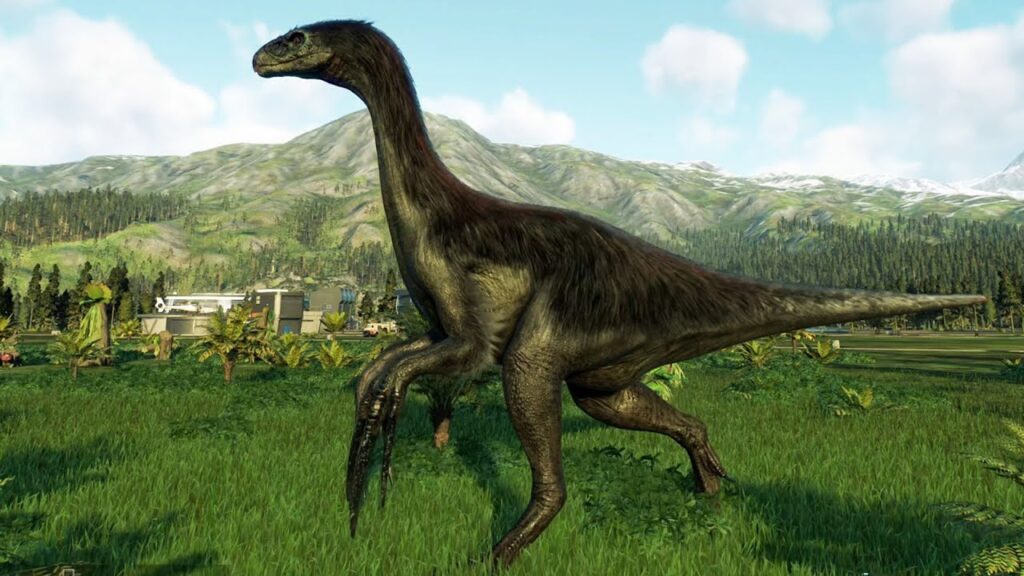The Therizinosaurus is often regarded as one of the most bizarre and perplexing dinosaurs to have ever walked the Earth. With its enormous claws, unique body structure, and unusual lifestyle, it has captured the imagination of paleontologists and dinosaur enthusiasts alike. But what exactly makes Therizinosaurus stand out among the many species of prehistoric creatures? Let’s take a closer look at the features that make this dinosaur truly one of a kind.
1. Giant Claws: The Most Striking Feature
Arguably the most iconic feature of the Therizinosaurus is its massive claws, which could grow up to 3 feet (about 1 meter) in length. These claws were not used for hunting or tearing flesh, as one might expect from such a large dinosaur. Instead, they were likely used for reaching high vegetation, perhaps as a method of stripping leaves from trees or defending itself against predators. The size and shape of the claws have baffled scientists, as they appear more suited for a herbivorous lifestyle rather than a carnivorous one, which further adds to the mystery of this dinosaur’s behavior.
2. A Herbivore with a Predatory Appearance
At first glance, the Therizinosaurus may seem like a fearsome predator, but contrary to its appearance, it was actually a herbivore. Unlike many theropod dinosaurs, which were known for their carnivorous diet, Therizinosaurus thrived on a plant-based diet. Its long neck and large claws suggest it was adapted to reach and feed on tall vegetation, possibly including ferns, cycads, and conifers. This unexpected herbivorous diet, combined with its predatory look, made it a truly strange member of the theropod family, which typically consisted of meat-eaters.
3. Unusual Body Proportions
The Therizinosaurus had a peculiar combination of features that set it apart from most dinosaurs. It had a long neck, a bulky body, and a relatively small head compared to its size. This gave it an awkward yet fascinating appearance. Its body structure, with its massive, clawed hands and long neck, suggests that it was highly specialized for its particular ecological niche. Scientists believe its unusual body proportions were well-suited for an arboreal lifestyle, reaching vegetation that other dinosaurs couldn’t access.
4. Feathers: Evidence of Modern Dinosaur Traits
Recent fossil evidence suggests that the Therizinosaurus, like many theropods, may have had feathers. While direct fossil evidence of feathers on this species is still debated, it is believed that feathers were present on at least some parts of its body. This feature ties it to the modern-day birds, which are descendants of theropod dinosaurs. The presence of feathers would make the Therizinosaurus even more fascinating, as it would have been a striking blend of dinosaur and avian characteristics.
5. The Mystery of Its Behavior and Habitat
The behavior of the Therizinosaurus remains largely speculative, but its physical traits give some clues. Its claws, long neck, and body size suggest it was well-adapted to a life in forests, possibly living in areas with dense vegetation. It is believed that, like modern-day herbivores, it may have spent much of its time browsing on high trees or shrubs. However, the lack of direct evidence regarding its interactions with other species or its social structure leaves many questions unanswered.
6. The Paleontological Puzzle: A Late-Cretaceous Enigma
Therizinosaurus lived during the Late Cretaceous period, around 70 million years ago, in what is now Mongolia. Despite being discovered in the early 20th century, it wasn’t until the 1950s that scientists truly began to understand the full scope of its strange features. The initial fossils were incomplete, and for a time, paleontologists mistakenly thought the dinosaur was related to carnivorous theropods. It wasn’t until later that its herbivorous nature and peculiar anatomical traits were properly identified.
7. Why It Continues to Fascinate Scientists

Therizinosaurus challenges many of our preconceptions about dinosaurs. It is a reminder that evolution is full of surprises, with creatures evolving in unexpected ways to fill specific ecological niches. The combination of its large claws, herbivorous diet, possible feathers, and strange body proportions makes it one of the most enigmatic dinosaurs ever discovered.
Therizinosaurus stands as a testament to the diverse and often strange nature of dinosaur evolution. Its unique traits make it not only one of the most fascinating but also one of the strangest dinosaurs in history. As research continues, more discoveries about its behavior, lifestyle, and evolutionary significance may further shed light on this truly extraordinary creature.
Conclusion
The Therizinosaurus continues to captivate both scientists and dinosaur lovers alike due to its unusual characteristics. From its massive claws to its herbivorous diet and possible feathered appearance, it truly defies conventional expectations. This dinosaur’s strange combination of features showcases the wonders of evolutionary diversity and reminds us that the prehistoric world was full of mysteries waiting to be uncovered.



